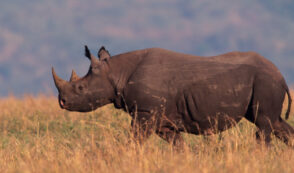NYT’s Bittman Wallows in Sentimental Mud-Hole
 Big news earlier this week: McDonald’s reacted to years of pressure from the Humane Society of the United States (HSUS, which by the way gives only one percent of its budget to hands-on pet shelters) by agreeing to require its pork suppliers to phase out “gestation stalls,” a method of housing pregnant sows in individual enclosures rather than group pens. And everybody’s favorite New York Times food pundit, Mark Bittman, is cheering that decision (even though, typically, he tempered his praise with “there’s a long way to go”).
Big news earlier this week: McDonald’s reacted to years of pressure from the Humane Society of the United States (HSUS, which by the way gives only one percent of its budget to hands-on pet shelters) by agreeing to require its pork suppliers to phase out “gestation stalls,” a method of housing pregnant sows in individual enclosures rather than group pens. And everybody’s favorite New York Times food pundit, Mark Bittman, is cheering that decision (even though, typically, he tempered his praise with “there’s a long way to go”).
Unfortunately, well-funded activist vegans and cookbook authors turned animal rights sympathizers don’t offer all of the facts. Instead, they would rather reinforce urbanites’ erroneous beliefs about what is best for animals.
Bittman, for example, dismissively writes that it’s “nonsense” to say that individual housing can prevent sows from attacking each other, an argument put forth by crate defenders. It’s interesting then to read the website of one artisan farmer (who doesn’t use gestation stalls) who writes the following while analyzing a recent HSUS “undercover” video:
[HSUS doesn’t] tell you that the scrapes and scratches on the pig shown at 1:32 are probably from fighting with other pigs. (Look closely, that pig is in a pen with others. And those marks are classic fight scratches.) Or that fighting amongst a herd can leave the submissive animals in a constant state of not just stress, but fear.
So, Mark Bittman, how long have you been a hog farmer? (We’ll guess approximately 0.0 days—after all, this is a guy who self-admittedly was trespassing on farms in Iowa just a few months back.) Another pork producer (who does use stalls) recalled how in group pens sows were at the mercy of a “bully sow” which kept the others from eating their feed, causing all sorts of animal-welfare complications. Dr. Jodi Sterle, an Iowa State University professor of animal science and expert in swine reproduction, confirmed this, telling The New York Times: “When they [sows] are raised in groups, there is competition for food, water and space, and especially for food.” Dr. Sterle also noted that “no easy alternative to sow stalls existed.”
It’s sad when urban activists like Bittman and HSUS claim to know how to farm better than the farmers themselves. But it’s worse when companies help perpetuate those misconceptions.
If you were watching the Grammys on Sunday night, you may have seen this Chipotle advertisement aptly named “Back to the Start.” The burrito chain’s ad, which has been around for a while, made it seem like the best way to raise pigs was in an outdoor, free-range setting. That plays into the regressive nostalgia of urbanites like Michael Pollan, but it’s worth asking: Why did farmers move to their current systems?
Some hog farmers have found that this “idyllic” system makes life worse for the pigs. One recalled that some pigs kept outdoors died of heat exhaustion (pigs don’t sweat effectively) in the summer and others trampled each other to death while huddling for warmth in the winter. Modern livestock housing offers farmers the opportunity to control climate throughout the year.
There are tradeoffs to every system. But to the activists, nuances don’t matter. Chipotle hopes to capitalize on urbanites’ lack of knowledge about animal behavior with sentimentalist sunshine and rainbows to sell a few more burritos. And HSUS may claim that they are interested in animal welfare, but in reality they are committed to “pursue on all fronts the … establishment of the rights of all animals.” (It’s not like McRibs and carnitas will be served at HSUS meetings as long as veganism is the defining philosophy of the group.)
In one of his periodic screeds against the hardworking men and women who produce America’s beef, pork, and poultry, Bittman said that people needed to “better understand industrial animal-rearing techniques.” We couldn’t agree more, and that better understanding should start with Mark Bittman. Bittman and his urban readers need to understand the careful thought that goes into choosing a husbandry method. Farmers look at all aspects of animal welfare based on their experience handling livestock every day. A New Yorker’s sunshine-and-unicorns view of an unrealistic animal agriculture Nirvana (much less a vegan activist’s dreams of eliminating animal agriculture altogether) isn’t an effective path to understanding animal welfare issues.



